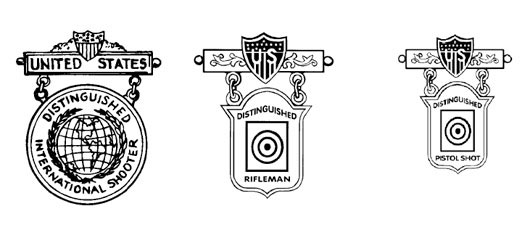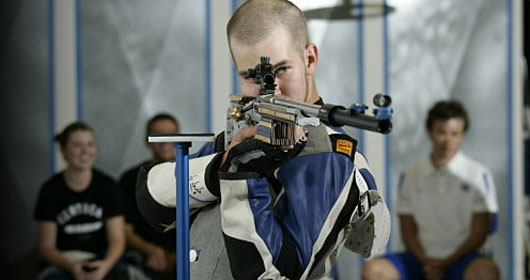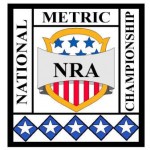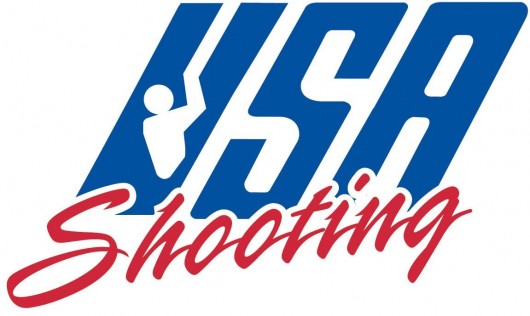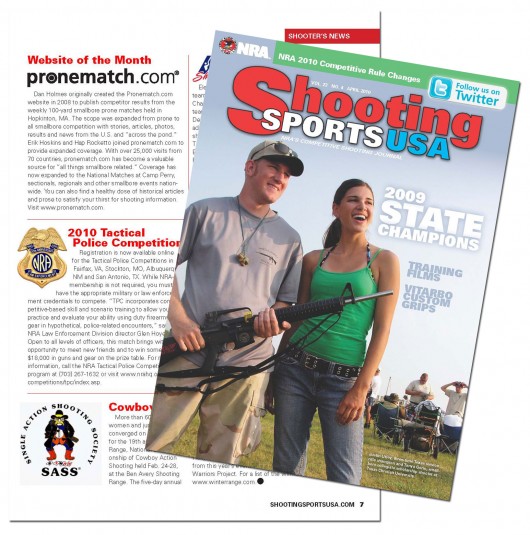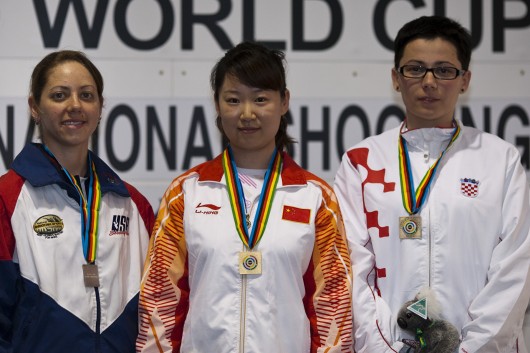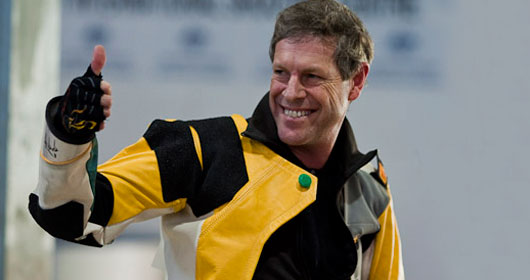A Short History of the .22 Rimfire Cartridge in the United States
by Hap Rocketto
They are more common and numerous than the grains of sand on a beach. They are, like alligators, the last hold out of an almost extinct species. They are the most highly developed and accurate factory made cartridge available today. Designed to bring home anything from a tasty squirrel for the pot to an Olympic Gold Medal for the trophy case they are manufactured in a dizzying number of multiformities and amounts. It would be safe to say that they have been produced in numbers that far exceed any other cartridge ever manufactured. They are the ubiquitous, humble, and unpretentious 22 caliber rimfire cartridges.
The rimfire cartridge, where the priming compound is contained inside of the rim at of the base of the case, was the first type of practical and commercially successful metallic cartridge manufactured. This type of manufacture gained great popularity in the 1860s and soon over two dozen firms were turning out cartridges in a host of calibers. The largest rimfire cartridges manufactured in the United States was the 58 caliber Miller and the One Inch Golfin. As big as they were in caliber their velocity, 1150 feet per second, was just about the same as a modern standard velocity 22 caliber Long Rifle rimfire.
Eventually the big rimfire cartridges were done in by the increasing demand for high-powered cartridges. The rimfire design required the case be thin enough to allow the metal of the rim to be readily crushed in order to ignite the primer held within. The thin copper, and now brass, cases are not able to stand up to the high pressures developed by heavier loads without rupturing. In center fire cartridges the base of the cartridge can be fabricated thick enough to withstand the higher pressure, even allowing for a small vent hole so the primer can do its work.
The advantages of rimfire manufacture also affect their practicality. Rimfires are cheaper to manufacture but, for all practical purposes, impossible to reload. To a nation on the move westward, far from reliable sources of supplies, the ability to reload a fired cartridge case was very important. The railroad companies hired professional hunters, the likes of Buffalo Bill Cody and Frank H. Mayer, to provided meat for the hordes of workmen connecting the east and west coast. This hardy band of buffalo runners would not have been able to bring the American Bison to the verge of extinction if they had to carry factory made ammunition. Throughout the late 1880s and the early 1900s the number of calibers of rimfire ammunition on the market steadily declined until, after World War II, all but the 22 caliber had disappeared.
The 22-caliber rimfire is presently available in forms that are styled Bulleted Breech Caps or BB Caps, Conical Bullet or CB Caps, Shorts, Longs, and Long Rifles. From time to time there have existed some other exotic versions of the 22-caliber rimfire such as the Extra Long, Winchester Magnum, and the Remington or Winchester Automatic. The Magnum is a very popular cartridge and is currently being produced by all of the United States manufacturers, with several different loadings.
The 22-caliber rimfire cartridge was first developed in France in 1845 by noted gunmaker Nicolas Flobert. Flobert experimented with percussion caps to make a short-range cartridge. He formed the caps to give them a rim and placed a lead ball in the recess for a projectile. The priming mixture in the cap was a sufficient propellant. They have come to be known as Bulleted Breech Caps, or BB caps.
Folbert’s rimfire cartridge has come a long way since it development. It is no plaything and has sufficient power to be very useful in vermin eradication in areas where a low powered and quiet cartridge is desired. Some shooters like to use it for practice in the basement but unless the firearm is chambered for the cartridge there is the real possibility of causing some damage to the chamber of the firearm. The cartridge is so short that what little gases there are might score the chamber and hard to clean powder residue and lead shavings can build up inside the shoulder of the chamber leading to corrosion.
First offered for sale in the late 1880s the Conical Bullet Cap fulfils much the same role as the BB cap, with the same provisos, although some of its detractors feel that it combines all of the bad qualities of the CB and the Short with none of either cartridges redeeming features. The CB Cap differs from the BB cap in that the projectile has a traditional bullet shape, the same 29-grain bullet used in the Short. Additionally the CB has a small powder charge to propel the larger bullet. The CB Cap is more powerful and noisier than the BB Cap but no more accurate. Cascade Cartridge Corporation and Remington have manufactured both the BB and CB in recent years in the United States.
Flobert’s developments lead to the creation of a longer bodied cartridge, in 1854, which become known as the Short. The Smith and Wesson First Model Revolver was introduced and chambered for this cartridge in 1857. The early date of manufacture makes the short the oldest of the self contained metallic cartridges. The original cartridge was loaded with three or four grains of black powder and a 29-grain bullet.
The Short has proven to be a versatile cartridge. Possibly because it is the least expensive of the 22 caliber cartridges it has been very popular since it first came on the market. As it approaches its 150th anniversary it is arguably the commercial cartridge with the longest continuous production run. Loaded with either a 29-grain solid point bullet or a 27-grain hollow point bullet the cartridge may be fired in any firearm chambered for the Long Rifle. The short has little recoil, when compared to the long rifle, and this has made it the cartridge of choice for competition in events such as International Rapid Fire Pistol.
The Rapid Fire Pistol course of fire is shot at 25 yards. The shooter stands on the firing line, with the pistol held down at an angle of 45 degrees, facing a bank of five turning targets. The targets are exposed for eight seconds in which the shooter must fire a shot at each target. The targets are again exposed, this time for six seconds. For a third time the targets are exposed for just four seconds. This set of 15 shots is repeated four times. Shooting at a ten ring only four inches wide. A perfect score is 600, with a 597 is considered to be a world-class score. The pistol used in this event contains a five shot magazine and has a wrap around form fitting grip. To further reduce the mild recoil, which might upset the shooter’s aim, the barrel of the pistol is ported.
Rapid Fire Pistol requires lightning like reflexes and steady nerve. The juxtaposition of the dynamic and static required of the sport may also produce an occasional personality quirk. At the 1964 Tokyo Olympics one of Nationalist China’s entry in this event, Ma Chin-shan, a retired army officer, sought political asylum in order that he might return to mainland China to be with his aged parents. It was granted and Ma became the only Olympic athlete ever to defect to a Communist country.
As a cartridge for plinking, small game hunting, and vermin extermination the Short is hard to beat. It is inexpensive, quiet, effective, accurate out to 50 yards, and available in both standard velocity and high velocity. Its small size can lull a shooter into some complacency and it must be remembered that the diminutive bullet has a range of over a mile and can wound or kill to its extreme range.
The Short cartridge has been packaged in many forms. The standard 50 round pasteboard box is the most common form. Other packaging types have been bulk boxes of 250 rounds, flat boxes similar to Chiclets gum boxes containing 28 rounds, and tin cans where the contents are sold by the pound. There is even an example of a pop-top beverage style container. The Short case has been loaded with solid points, hollow points, and frangible bullets. Quite often the lead bullets were coated with a thin copper plating.
The frangible bullet was designed to disintegrate upon impact and was manufactured for the shooting gallery market. They were sold by Peters Cartridge Corporation as the Krumble Ball, Remington offered the Splatter-Less and Special Gallery, while Western Cartridge Corporation promoted Kant-Splash, and Winchester produced Splatterpruf. The most common bullet weight was the traditional Short weight of 29 grains but a lighter 15-grain composition bullet was available. During the 1930s and early 40s the market for this type of bullet was quite large as this was the era when no self respecting arcade, carnival, amusement park, or county fair would be found with out a shooting gallery. There the men, young and old, would display their skill in the manly art of marksmanship to adoring beaux or wide eyed child by ringing bells, knocking down moving steel ducks, and tipping over metal representations of clay pipes.
One of the more unusual loadings of the 22 Short was probably produced by Winchester and called the Spotlight. Beginning in 1913 through 1942, a copper cased cartridge was tipped with a hollow point bullet. The cavity of the bullet was filled with an explosive flash compound that would detonate when it struck a hard surface. The flash, which was about the size of a half dollar, could be seen from the firing line allowing the shooter to adjust his fire.
The 22 Long came into being about 1871. It is often, and erroneously, believed to be a mongrel throwback cartridge cobbled together from the case of a Long Rifle, the bullet of a Short, and an intermediate powder charge. As late as the 1930s even General Julian Hatcher, one of the icons of shooting in the United States, printed this misconception in his widely read Textbook of Pistols and Revolvers. The simple fact is that the Long was first placed on the market in 1871, some 15 years before the introduction of the Long Rifle. The common misconception about the cartridge must rise from the fact that the Long is loaded with a 29-grain bullet while using a case with the dimensions of the Long Rifle.
Prior to World War II the Long was becoming obsolete, being replaced by the Long Rifle. Jack O’Connor, a prolific, widely read and respected author of shooting and hunting books, stated that the Long is a “…pretty useless contraption” while Hatcher said the cartridge “…had nothing to recommend it.” National Pistol Champion Charles Askins’s harsh criticism was that it was, “… an abomination which never should have seen the light of day.” When one considers the sources of these comments this is pretty damning commentary. Swimming against the tide the Long has managed to hang on well past its time. While still produced by several United States manufacturers it is not an easy cartridge to find.
The undisputed king of the 22 calibers is the Long Rifle. Without a doubt it is the most widely produced cartridge in history and has been a part of the shooting scene since 1886. It was developed by the J. Stevens Arms and Tool Company and first manufactured by the Union Metallic Cartridge Corporation. The manufacturer took the Long case, filled it with five grains of black powder, and added a 40-grain conical bullet without a crimp. From that simple beginning the Long Rifle cartridge has undergone continuous development.
The 22 caliber Long Rifle has taken many forms. It started as a simple black powder cartridge with a cast bullet. Since it’s humble beginnings its refinements have mirrored many of the modern technological and manufacturing changes. Powder charges changed from black powder, to semi-smokeless, to smokeless types. The bullets began as a casting and evolved into a swaged product. The cases were originally copper and over the years mutated to brass. The Long Rifle has evolved into the most accurate match cartridge ever made. It is manufactured in blank, solid point, hollow point, shot, and tracer; subsonic, standard, high, and hypervelocity speeds.
Vocationally it serves industry in diverse roles. In construction it serves as a stud setter and nail driver. The firearms industry employs them for barrel proof testing; gunsmiths use action-testing dummies while Hollywood and Broadway use it for theatrical effects. It is used as a humane large animal killer for slaughter houses and veterinarians alike. For recreation it plinks, hunts, is collected, and wins medals at all levels in both rifle and pistol competition.
The ubiquitous rimfire has been manufactured by more than 30 companies in the United States and sold by an even greater number of business operations. Early on the manufactures saw a profit in, and became involved with, the packaging of propriety, or private label, brands. Easily recognizable names such as Remington, Winchester, Western, Federal Cartridge Corporation, Peters, and Cascade Cartridge Corporation have been, or are, major players in the world of United States 22 caliber cartridge manufacture. We are also nostalgically familiar with rimfires sold in hardware stores, auto supply outlets, and local mercantiles under house names such as Hiawatha, Hawthorne, J.C. Higgins Sta-Klean, Sears Ted Williams, or Western Auto’s Revelation to name a few.
Some munitions companies such as Herter’s, Smith and Wesson, Hodgdon Powder, Charles Daly shotguns, and Browning have had 22-caliber ammunition manufactured and packaged for them by other firms, both foreign and domestic. Whether this were serious attempts to capture a small share of the market, or as advertising ploy, is unclear. What is clear is that while 22 caliber cartridges are much alike the packaging is not. The only uniformity in packaging is the Consumers Products Safety Commission’s “Warning: Keep out of the reach of children” caveat which appears on every box of ammunition produced since 1962.
There appears to be an almost infinite diversity of 22 caliber boxes. There are, in fact, so many that their amazing variety has spawned a small, but serious, subculture of firearms hobbyist, the 22-caliber box collector. Since 1985 the late Tony Dunn and The Association for the Study and Research of 22 Caliber Rimfire Cartridges has been working to catalog the many boxes produced. To date the work is a little over 2 1/2 inches thick! The ASR22CRC believes they are involved in a Sisyphean task that may eventually contain more than 8,000 boxes with 3,500 photographs.
The major producers of 22 caliber cartridges have gone through a long convoluted history of business success, failure, mergers, and acquisitions. Omark had its beginning in 1951 as Cascade Cartridge, Incorporated (CCI) and started producing 22 caliber ammunition in 1963. CCI has been a leading force in contemporary ammunition development. CCI is responsible for both the plastic box, which it introduced in the early 1970s and the Stinger. The Stinger, the first hypervelocity 22 caliber rimfire, came about when, in 1977, CCI redesigned the hollow point Long Rifle bullet by reducing its weight from 36 to 30 grains and filling the case with a slower burning powder. The result was a 22 caliber rimfire that had the same dimensions of a Long Rifle but a muzzle velocity of 1640 feet per second, a significant increase over the Long Rifle’s 1140 feet per second.
Federal Cartridge Company was incorporated in 1916 but did not begin production of 22-caliber ammunition until 1924 when it gained control of the American Cartridge Company. From then on the rimfire business was the backbone of the company and it was the manufacturer of retail giant Montgomery Ward’s and Sears’s house brands as well as Western Auto’s Revelation line. Federal has worked long and hard on the development of a world-class 22-caliber Long Rifle match cartridge. It succeeded with its Gold Medal UltraMatch, ending a 20-year absence of United States match ammunition from rifle ranges.
Olin Corporation is the corporate umbrella that covers ammunition produced under the various forms of the Winchester and Western names. In the early days of the 20th century Union Cap and Chemical Company and Benjamin Butler’s United States Cartridge Company were absorbed by Winchester while National Cartridge was taken over by Western adding much to the Olin lineage. The business convolutions of this giant are Byzantine. Western Cartridge Company took over Winchester in 1939 and in 1945 Olin brought Winchester-Western into the Olin Corporation. For the sake of simplicity, and this discussion, its ammunition is best referred to as Winchester-Western.
Based in New Haven, Connecticut, Winchester-Western shared the bulk of the 22-caliber rimfire market with Remington Arms. By odd coincidence Winchester-Western’s corporate headquarters were just a few dozen miles to the east of Remington’s ammunition plant in Bridgeport. East Alton, Illinois, a half a continent away, was the site of the Winchester-Western ammunition production facilities.
Winchester-Western is well known for its early adoption of the Peter’s Corporation’s innovation in semi-smokeless powder, the use of Dupont’s Lesmok, a blend of 85% black powder and 15% smokeless. In 1927 the company introduced both a new noncorrosive priming compound called Staynless and its Lubaloy bullet, a lead core coated with a thin jacket of a copper alloy gilding metal made up of 90% copper and 10% zinc. The light metal wash was designed to lubricate the bullet and thereby reduce barrel wear and fouling. Western introduced the first of the high velocity 22 caliber cartridges in 1931 under the name Super-X. Remington quickly followed suit when it began to market Hi-Speed.
Winchester and Western began producing match quality ammunition sometime after 1910. Marketed under names such as Precision 75, for gallery use, and Precision 200, for outdoor matches, they quickly gained a large and loyal following. Five Star Precision, in a precursor to match boxes of the modern day, would be the first box that provided a cardboard loading block holding all the rounds separately with bullets pointed down, instead of the more common tray that had the cartridges packed in sardine like rows alternating nose to rim. Other match ammunition would include EZXS, All-X Match, Super Match Mark II, and Super Match Mark III. Super Match Mark IV was specifically designed for pistol shooters although it performed well in rifles. It was the last of the line as all match ammunition production at Winchester-Western ceased in the early 1990s. Winchester returned to the 22 caliber match ammunition market with the introduction of Supreme 22 Long Rifle Match ammunition, manufactured by its Australian Olin subsidiary, in 1999.
The introduction of Mark III in 1952 was a major breakthrough in rifle match ammunition. It had been found that the wind drift of a 22 caliber round was much less the closer the speed of the bullet was to the speed of sound. Standard velocity bullets were designed to travel at about 1400 feet per second. Winchester-Western redesigned the bullet, changed the method of lubrication, and provided a new powder loading so that the velocity was 1100 feet per second.
In the mid 1970s the company introduced a successor to the Mark III, called Super Match Gold. There were some production problems that caused occasional feeding problems and by the time they were addressed and rectified the ammunition had fallen out of favor. After almost seven decades of United States prominence in the production of 22-caliber match ammunition the curtain fell and the European brands Eley, Lapua, and RWS had the field to themselves.
Remington is one of the oldest and famous firearms firms in the United States. It had its beginnings in the small village of Ilion Gorge, some 15 miles south of present day Utica, New York. It was here that young Eliphalet Remington, apprenticed to his blacksmith father, began manufacturing firearms. From these simple beginnings the company grew large and successful as a result of the government’s needs for firearms during both the Mexican and Civil Wars. As businesses go so did Remington and in 1888 it was bankrupt. The business was purchased by Marcellus Hartley’s Union Metallic Cartridge Company. At this time Winchester bought a half interest in the firm but sold it back to Hartley and his partner 16 years later.
Hartley began to sell ammunition under the Remington-Union Metallic Cartridge Company name in 1911. In the early 1930s two major business deals solidified Remington’s hold on the ammunition market. In the first move Remington bought the successful and innovative Peters Cartridge Company located in King’s Mill, Ohio in 1934. Before the turn of the century Peters had introduced innovations in powder and about 1920 the first noncorrosive primer was produced. Peters had a line of fine match grade ammunition. One cartridge was designed by famous barrel maker and marksman Harry Pope and went by the name of Stevens Pope Armory and another was called Tack Hole. Soon after the Peters acquisition, Dupont purchased a controlling interest that would end in complete ownership of Remington by 1980.
The Remington line of target ammunition was, perhaps, the most popular and accurate during the years between the World Wars. At this time smallbore competition in the United States was overwhelmingly prone, and it would remain so until well after World War II. Starting with the Tack Hole brand Peters developed Wimbledon and Dewar Match ammunition. The Wimbledon Trophy is awarded to the winner of a 1,000-yard any sight match fired each year at the National High Power Championships. By tying in this name with a 22-caliber ammunition the manufacturer implied that it was a high quality long-range ammunition. In those days 200-yard smallbore matches were very popular so any linkage with a prestigious center fire long-range match was a plus.
The Society of Miniature Rifle Clubs of Great Britain sponsored an international postal tournament in 1909 and invited several nations to participate. The trophy awarded to the winner was presented by match patron Sir Thomas Dewar, a noted wine and spirits merchant, and soon the match was referred to by his name. After World War I the Dewar Match was resumed and the required course of fire was 40 record shots, 20 shots at 50 yards and another 20 shots at 100 yards. The Dewar is the preeminent postal smallbore prone match in the English-speaking world and became an important part of the National Match program in 1919 and has remained since. Peters Cartridge Corporation rose to the challenge of producing quality outdoor match ammunition and named it after this important tournament.
The Remington Company has maintained Peters as a brand name. During the post war years the company produced a line of popular general use cartridges. Its match ammunition was manufactured until 1972. By the middle 1980s the Peters’s production lines were shut down. From time to time Remington issues a box with the Peters name to maintain the trademark.
About 1920 the Remington-UMC name was dropped in favor of Remington. In 1926 the company broke free of the past when they introduced a new noncorrosive non-mercuric priming compound. To coincide with this innovation the company redesigned the packaging and ran a contest to name the new ammunition. Putting up $500 in prize money, a serious amount of cash in those days, the company drew over 10,000 entries. In the end the winning name, Kleanbore, was submitted by two contestants, W.A. Robbins of Jonesville, Louisiana and Nelson Starr of Goshen Indiana, who shared first prize.
Remington introduced a new line of lubricated cartridges called Hi-Speed Kleanbore in 1930. This high velocity loading sounded the death knell for copper cases. The soft copper was just not strong enough to withstand the higher pressure and was replaced with brass. A few years later, in 1936, a dry paraffin wax lubricant was introduced to reduce barrel wear and leading to replace the old greased and copper washed bullets. It was called KleanKote and was nothing more than the Peters FilmKote lubricant that Remington used on all its 22 caliber products after Peters was brought into the Remington family in 1934. The copper washed bullets would return after World War II but they would be dry lubricated and the wash was just a cosmetic marketing gimmick.
United States Army Captain E.C. Crossman was instrumental in establishing the first of the national smallbore championships in 1919. The matches were run by the United States Navy at ranges especially built at Caldwell, New Jersey. This event heralded the start of a major development effort by all of the ammunition companies to come up with atop flight product. Remington had not enjoyed a good reputation in this area and had to struggle to catch up the more established names. The sales force blanketed the land and passed out sample at matches. The product’s reception in the United States was lukewarm, but it was more appreciated in England where there was no quality match ammunition available.
Borrowing from Peters, the new ammunition was named after a famous rifle match. In this case it was the Palma Match that was first shot in 1876. The Palma course consists of 45 shots, 15 rounds being fired at 800, 900, and 1,000 yards. Remington advertised its success at the English matches and the product soon took off at home. For some years it was available in both Lesmok and semi-smokeless loadings.
Palma Match ammunition became well accepted and was soon joined by another Remington product, the Model 37 22 caliber target rifle. Introduced at Camp Perry in 1936, leaving a bit of a mystery as to why it was not named the Model 36, the rifle was designed to compete with the well-established Winchester 52 target rifle. The new rifle proved quite successful and now Remington had a matched pair in its prone competition stable. The rifle would stay in production until the middle 1950s when it was replaced by the 40X. The new rifle’s name was indicative that it was a rifle capable of shooting a perfect 400 with 40Xs. Palma Match would be replaced at about the same time with a new match cartridge with a redesigned bullet. The new match ammunition, Rifle Match, and Pistol Match ammunition would stay in production until 1982 when, like Winchester-Western, economics and quality European match ammunition forced the production lines to be closed.
The manufacture of 22-caliber ammunition was of some concern to the United States Armed Forces. The little cartridges had many uses including training, sub caliber devices, survival equipment, and testing. The official use of 22-caliber ammunition dates as far back as 1903 when cartridge cases were developed, on an experimental basis, to hold a 22-caliber cartridge in a service rifle for indoor gallery practice. During the interwar years the cartridges were used for training. During World War II a critical shortage of brass developed and Federal, Western, and Remington did extensive work on zinc plated steel cases. Blanks were used in artillery training devices and a 22-caliber cartridge holder was developed to use in the 30-caliber machine gun in order to save service ammunition. Watertown Arsenal developed a special Long Rifle cartridge that shot a 17 grain machined steel slug that was used to test the effectiveness of body armor.
World War II brought about the only known full metal-jacketed 22-caliber rimfire cartridge. The Army Air Forces (AAF) and the Office of Strategic Services (OSS) needed a 22 caliber round that would meet the conditions set forth in the Hague Convention, which forbade the military use of both lead and hollow point bullets. The AAF needed a cartridge for the rifles it issued in aircrew survival kits and its original request for hollow point Long Rifle cartridges was denied on legal grounds. The OSS, the precursor the Central Intelligence Agency, wanted the cartridge for use in the silenced High Standard pistols used by its agents.
The search ended with the production of the T42 cartridge. A long rifle case was loaded with a bullet that had a lead core and was fully encased in a gilding metal jacket. The weight of the final bullet was 40.5 grains. As time went on the designation would change to M24 and around three million of these cartridges would be produced before the end of the war.
Through the Office of the Director of Civilian Marksmanship millions of youngsters have been given basic marksmanship and firearm safety instruction. The DCM supplied 22 caliber ammunition is, in part, responsible for the declining firearm accident rate in the United States, a military age population that is familiar with marksmanship skills, and an appreciation of the shooting sports. Almost all that have participated in the program have gone on the be responsible firearm users and owners, many have become competitive shooters. A few have gone on to represent the United States in World Class shooting competition.
In retrospect the development of the 22 caliber rimfire cartridges must have followed, in logical progression, the order of their size. The BB cap evolved into the Short. The Long was an attempt to improve the Short and the Long Rifle is the natural improvement of the Long. While the Short and the Long Rifle have been successful developments the Long has not. It’s continued limited presence is due more to sentiment and the false impression that it has a higher velocity than the Short, rather than any real shooting qualities. The Long may be fired in any rifle chambered for the Long Rifle but is less accurate than either of its siblings. The Long has been available in standard velocity, high velocity, and shot loads.
For close to a century and a half, since 1854, the 22-caliber rimfire has been a part of the shooting scene. It has gone through endless refinement and development. It has helped to teach safety, responsibility, and marksmanship to generations. It is arguably, the most accurate factory ammunition produced. With over three million rounds of 22 ammunition produced each day in the United States alone, there may only be only two things that can be considered universal, the element hydrogen and 22-caliber rimfire ammunition.
Note: The author wishes to express his debt to Mr. Richard Rains for his invaluable assistance in the preparation of this article. Mr. Rains, a fellow member of The Association for the Study and Research of 22 Caliber Rimfire Cartridge, is editor of the ASR22RC’s journal, The .22 Box.
(download a PDF version of the article here: history-rimfire-ammo (PDF, 61KB)


